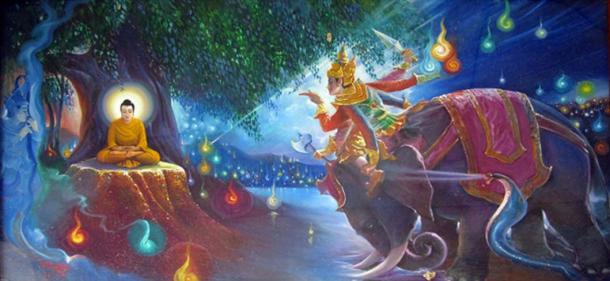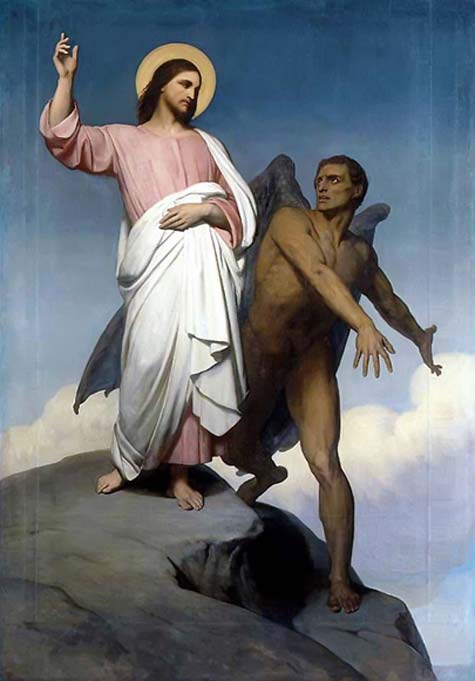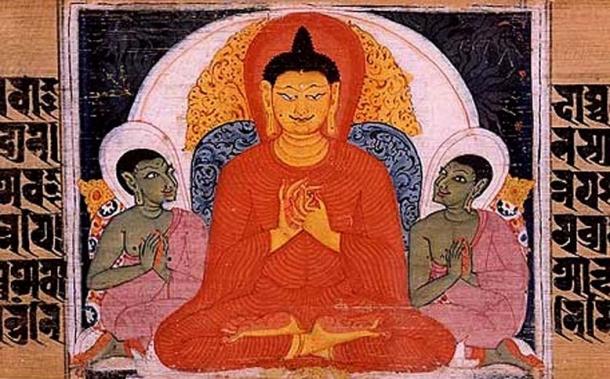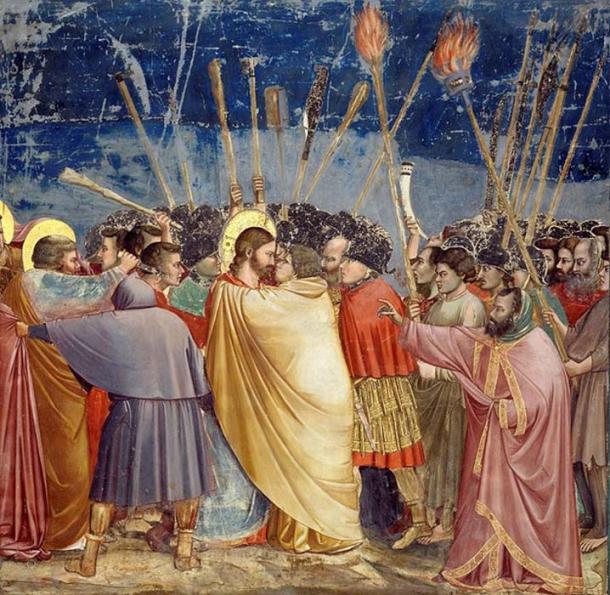http://www.ancient-origins.net/human-origins-religions/christ-and-buddha-how-can-you-explain-uncanny-similarities-008377
8 JULY, 2017 - 18:54 JIM WILLIS
The Christ And The Buddha: How Can You Explain the Uncanny Similarities?
Buddhism and Christianity arose independently of each other, separated as they were by almost 3,000 miles and at least 500 years. In terms of religious belief systems they are even farther apart. Many Buddhists, for instance, don't believe in a supreme being. Christianity is based on such a belief. The Buddha was careful to reject any efforts to label him a deity. Christ claimed to be one with God. The Buddha taught his followers to find the Middle Way between poles of opposites such as good and evil. Christ encouraged his disciples to choose the good and reject the evil.
But despite the differences there exists an uncanny similarity in how an underlying mythology shaped the stories of the founders of these two world religions. We can't help but wonder if writers shaped their origin story to fit a mythological pattern of some kind. The principle texts of both religions were written down only after decades, and in some cases centuries, had passed since the founder's death, leaving plenty of time to organize oral tradition into familiar and acceptable frameworks. How else can we explain such an uncanny similarity?
Both Left Home & Faced Down Evil
Consider the following:
Both Siddhartha Gautama, who was to become the Buddha, and Jesus of Nazareth, who was to become the Christ, are said to have left their homes in the prime of their lives, seeking truths that exist beyond the scope of most people's interest. Both were eventually led into a wilderness where, alone, they faced the devil and his traditional three temptations.

Scene of the Buddha's Great Departure from palatial life. Gandahara 1-2nd century. Guimet Museum. Personal photograph 2005. This scene depicts the "Great Departure" predestined being, he appears here surrounded by a halo, and accompanied by numerous guards, mithuna loving couples, and devata, come to pay homage. ( CC BY-SA 3.0 )
Siddhartha sat beneath the Bo tree where Mara, an old Hindu god and devil figure, confronted him.

Mara depicted in the Burmese style, attempting to tempt Buddha ( CC BY-SA 3.0 )
Jesus, in the wilderness, faced Satan, the fallen angel formerly known as Lucifer.

Lucifer depicted in The Temptation of Christ, by Ary Scheffer, 1854. ( Public Domain )
It’s believed that both were tempted by the cravings of the flesh, the spirit, and worldly pride. Both emerged from that experience with a new teaching and immediately proclaimed their insights.
- The Cult of Mithra: Sacred Temples, and Vedic Legends, and Ancient Armenian Understanding
- 5,000-Year-Old Rock Painting Suggests a Nativity Scene 3,000 Years Before Jesus’ birth
- 3: The Perfect Number - Trinity Symbolism in World Religious Traditions
- The Truth Behind the Christ Myth: Ancient Origins of the Often Used Legend – Part I
Both Spread Teachings
The Buddha's first order of business was to deliver the famous Deer Park Discourse . Here he put forth the teaching that was to become the bedrock of Buddhism: The Four Noble Truths .

The Buddha teaching the Four Noble Truths. Sanskrit manuscript. Nālandā, Bihar, India. ( Public Domain )
Jesus preached what has come to be known as the Sermon on the Mount , wherein he outlined, in the Beatitudes, a model for Christian life. Both sermons detailed, in systematic fashion, how followers were to live out the precepts of the founders.
Both Betrayed!
Both then selected a group of twelve disciples—one of whom was to later become a betrayer. Although the Buddha lived on into old life, both men eventually died at the hands of another man, who they each forgave before succumbing to death.

Kiss of Judas (1304–06), fresco by Giotto, Scrovegni Chapel, Padua, Italy ( Public Domain )
Even the final words of the Buddha are echoed by the proclamations of Christianity.
The Buddha said, "Be ye lamps unto yourselves." Jesus said almost the same thing: "Ye are the light of the world."
The Buddha declared all matter in this world to be transitory. Jesus said: "Heaven and earth will pass away, but my words will not pass away."
The Buddha's last words are said to be, "Work out your own salvation with diligence." The Apostle Paul, speaking for Jesus, said, "Work out your own salvation with fear and trembling."
Both Founders Had Priesthoods and Symbolic Postures
The traditions that followed both men are equally interesting. Both developed a system of priesthood, complete with rules and regulations for men who ascended to positions of leadership.
No comments:
Post a Comment